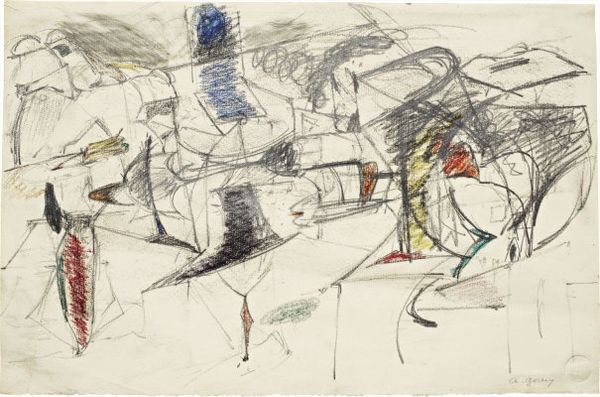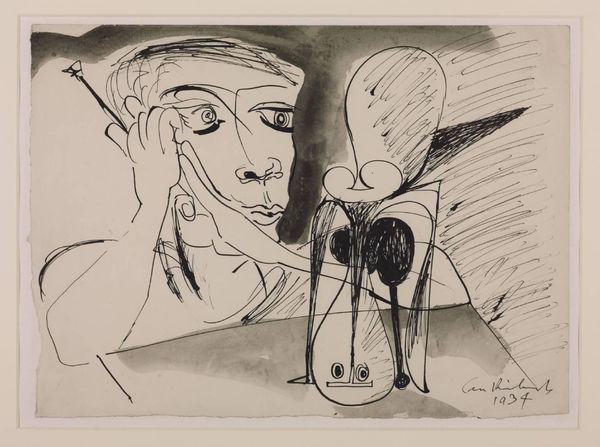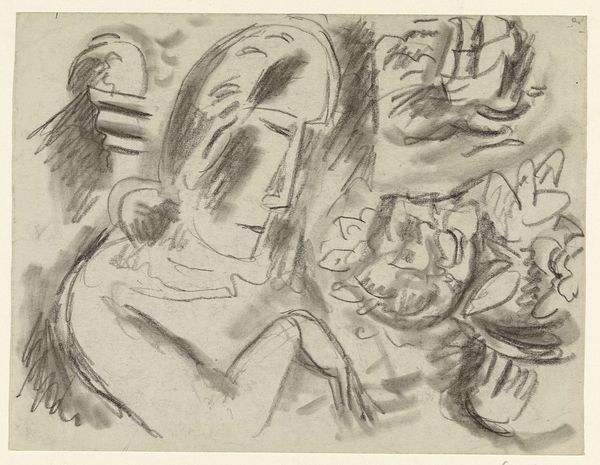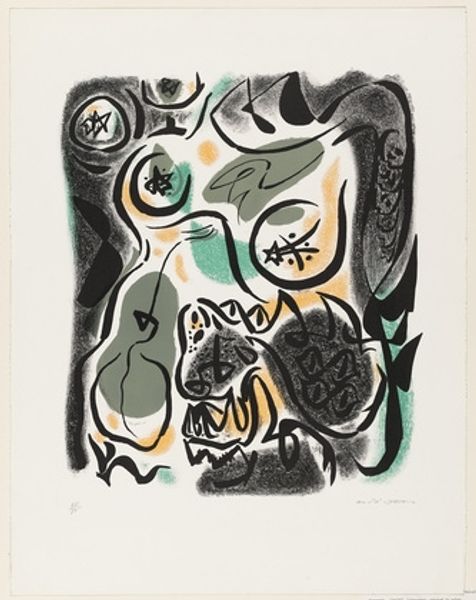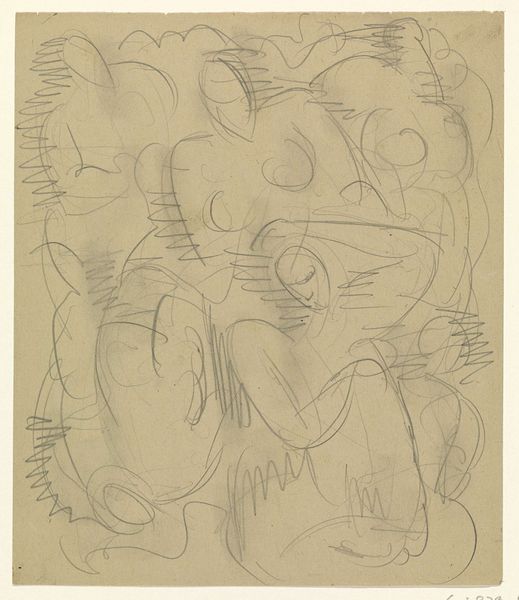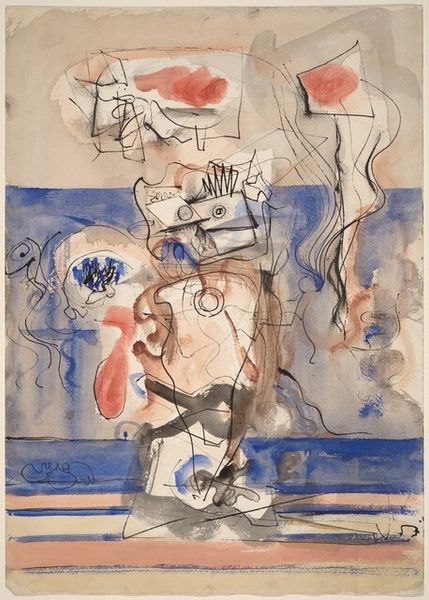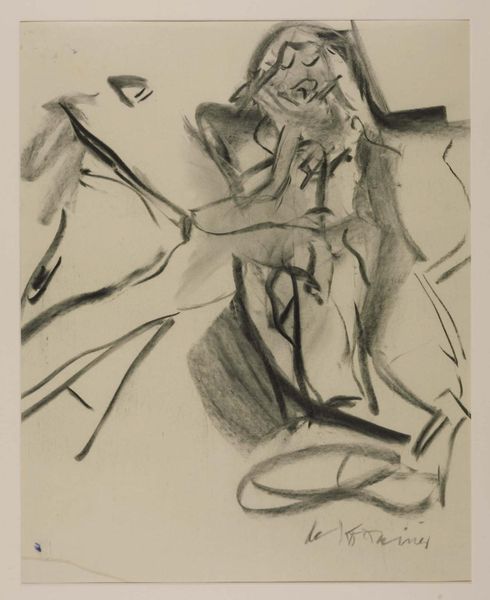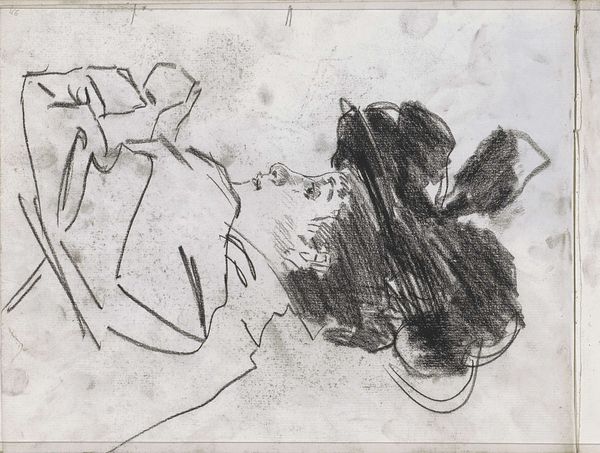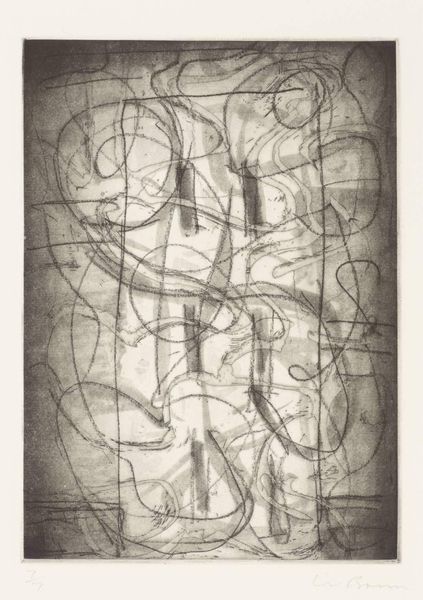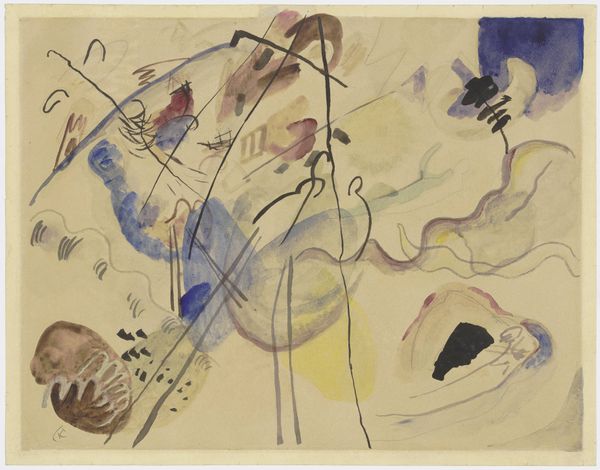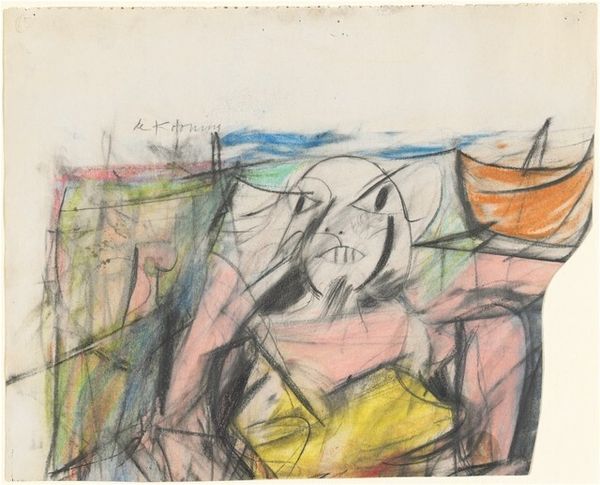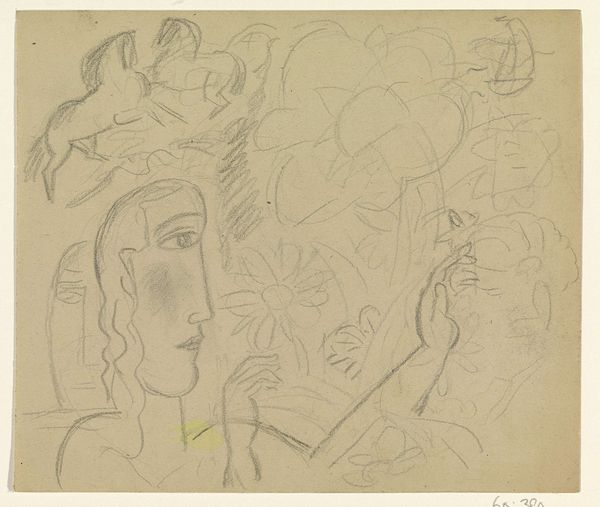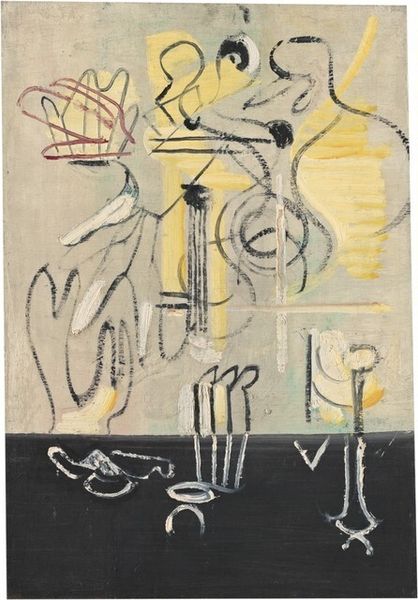
drawing, pencil, graphite
#
drawing
#
form
#
pencil drawing
#
pencil
#
abstraction
#
line
#
graphite
#
modernism
Copyright: Le Corbusier,Fair Use
Curator: Look at this evocative drawing, "Abstract Composition/Figures in a Landscape" created by Le Corbusier around 1930. It employs pencil and graphite on paper. What's your immediate impression? Editor: A fragmented dream, perhaps? The forms feel vaguely organic yet rigidly geometric. There's a tension between the flowing lines and the stark angles. I am reminded of early surrealist landscapes. Curator: It’s interesting that you mention surrealism, a movement that heavily influenced artists of the time and Le Corbusier, although known for architecture, continuously produced drawings and paintings throughout his career. This was part of his effort to reconcile rational forms with the biomorphic. These artworks gave him space to explore pure forms outside the demands of urban design. Editor: The interplay of these “pure forms” creates something compelling. The juxtaposition of soft, almost flesh-like curves with harsh lines... It makes me think about how we try to impose order on the natural world, and how nature resists that imposed structure. Blue, especially, represents water, emotion and flow. Curator: That tension, I believe, is at the core of much of Le Corbusier's work. He saw the built environment as something that should serve human needs while also possessing an aesthetic clarity rooted in mathematical principles. Yet there were criticisms from the avant-garde and post modern critics claiming Le Corbusier was indifferent to social needs or even that his approach facilitated social control by authoritarian governments. What would you say to these detractors? Editor: Well, one can't ignore that there is this sense of cool, detached observation. However, there’s also a feeling of human presence. Not explicitly, of course, but suggested within the forms. A negotiation with our natural state, and I feel invited into that dialogue, rather than shut out by social designs of government. Curator: I see your point. It invites an interrogation of social and material conditions rather than shutting us out. A testament to the power of form itself, independent of programmatic imposition! Editor: Precisely! After our exchange I am struck again by art’s mysteriousness. We began trying to name things and instead encountered this generative moment that exceeds the intentions of the author, inviting many interpretations and debates.
Comments
No comments
Be the first to comment and join the conversation on the ultimate creative platform.
